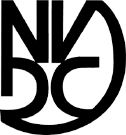Jill Nordfors Clark
NWDC is thrilled to showcase Jill Nordfors Clark for October's NWDC Artist Interview. Jill Nordfors Clark has been a leading writer, lecturer, and teacher on needle lace for more than 40 years. This experience, combined with her love of natural materials and environments, inspired her to move from two-dimensional embroidered lace to three-dimensional sculptural baskets — her current medium of choice.
She has been working with gut for about 20 years. When Jill discovered that wet gut could be threaded on a large needle and used as a thread, then when it dried it would be stiff and could stand on its own, her work suddenly changed from two-dimensional to three-dimensional. Basketry was a natural transition, combining her knowledge of needle lace stitches with gut created infinite possibilities.
1. How were you introduced to art?
Art introduced itself to me. As I was growing up I loved drawing, watercolor, and anything to do with fabrics and sewing. My family was in the retail furniture business in Victoria BC, so in high school, I worked summers in the store and in the drapery workroom. I took my sewing machine with me when I left Victoria for the University of Washington in Seattle. My father's idea was for me to get my degree in interior design so that after graduation I could return to work at his store. I did get a degree in interior design but I never returned to live in Victoria.
2. Where do you find inspiration when creating new work?
I find inspiration in natural materials, trees, shells, rocks, and walking on the beach. I am moved and inspired by the art of indigenous people. On a trip to Alaska, I had my first encounter with vessels and clothing made from seal and walrus gut, materials that are protected and can only be used by the native people. By chance, I connected with artist Pat Hickman, who was working with hog gut, which has been my material of choice for over twenty years.
3. What do you consider your greatest artistic achievement?
I have written two embroidery books on Needle Lace, a way of making lace with a needle and thread. As the "Needle Lace Lady" I was able to exhibit, travel, and teach workshops all over the USA, the UK, and New Zealand. I was also invited to create a large stitched sculptural piece for the International Triennial of Tapestry in Poland, using hog gut as my medium.
4. What is the quality you most like in an artist?
Generosity. Thanks to NWDC member Jan Hopkins, I was introduced to the basketry community. Fiber artists in general, but specifically Basketry artists are always willing and anxious to share their knowledge of techniques and materials.
5. Which living artist do you most admire?
I admire Pat Hickman for her continuing, sensitive work with hog gut, or in her terms, "animal membranes". In the non-living category, I would choose Emily Carr, a Canadian painter/author whose work has influenced me since my childhood.
6. If you could change one thing about yourself, what would it be?
I'd like to stop the aging process right now so that I can continue my energy level and focus for at least another ten years.
7. What is your most treasured possession?
Hardly a "possession", but my most treasured are my family: a supportive husband, a talented son, and an artist (printmaker) daughter who lately has worked with me on several collaborative pieces.
8. Who has had a signific influence over your work?
Author and embroiderer the late Jacqueline Enthoven for encouraging me to write about needle lace, Pat Hickman, for working with hog gut, close basketry, and NWDC friends (Danielle, Nancy, Dona, Anita, Lanny, Lynn, and others) for always cheering me on.
9. How has your studio practice changed?
My studio practice has not changed over the years. Even though I have always wanted a large studio, my work has mostly been created in our kitchen or in a tiny eight-foot by eight-foot space I call my studio. Any large works I have made are assemblages of smaller units.
10. What is your idea of perfect happiness?
Walking on the beach, looking for agates.
Images (Top to Bottom): “ARMATURE, 8” H X 16.5” diameter, stitched hog casing, beach combed bleached bones, reed | FALLEN, 11” H X 13” diameter, lashed reed, layered hog casing, pencil drawing | "The Last Syllable of Recorded Time", 2010. White earthenware, glaze, watercolor, and pastel, 77.5" x 51.5" x 2.5" Photo credit: Richard Notkin | WHEN A TREE FALLS IN THE FOREST, approx. 6’ H X 5’ W X 4’ D, stitched hog casing, reed, acrylic paint, yarn International Triennial of Tapestry, Lodz, Poland, 2016 | SWIMMING UPSTREAM, 63” H X 12” diameter, stitched hog casing, reed, plum twigs, beaver cut and peeled willow from the Togiak River, Alaska Collection: Nancy Loorem Adams and Ron Adams | Portrait: Jill Nordfors Clark, photo Tom Holt.




